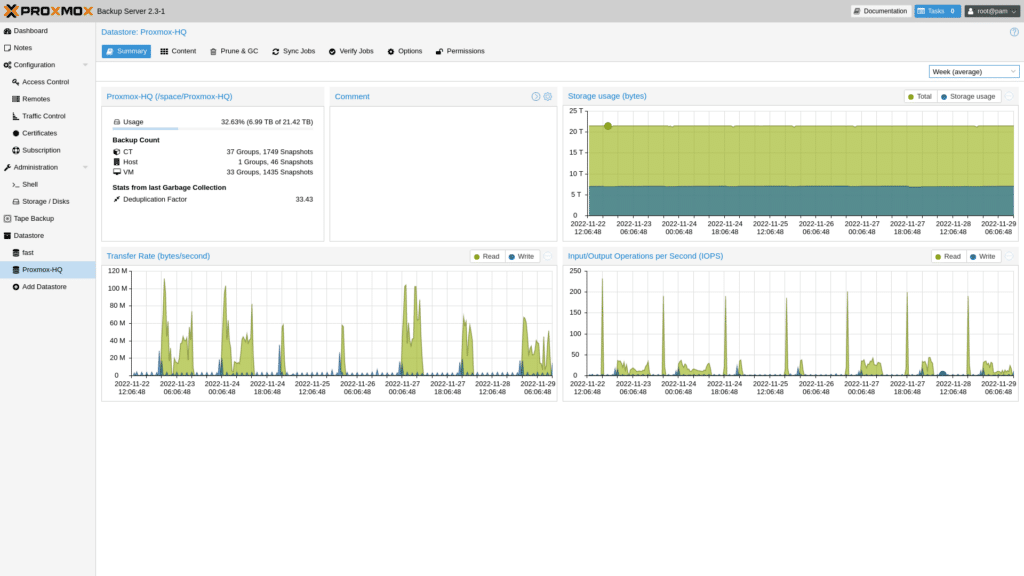Proxmox Backup Server Version 2.3 is now generally available. The open-source server backup solution gives enterprises an easy way to back up and restore VMs, containers, and physical hosts and supports incremental backups, deduplication, Zstandard compression, and authenticated encryption. This version brings enhancements to the web interface and tape backup features, along with a range of other general client and backend improvements.
 Proxmox Backup Server is based on Debian 11.5 “Bullseye” (previously version 11.3) and uses the newer Linux kernel 5.15 as stable default (kernel 5.19 as opt-in), and includes ZFS 2.1.6. This brings fine-grained access control, data integrity verification, and the ability to create off-site backups via remote sync. Users can also create tape backups to help with ransomware infections, as it allows critical data to stay secure.
Proxmox Backup Server is based on Debian 11.5 “Bullseye” (previously version 11.3) and uses the newer Linux kernel 5.15 as stable default (kernel 5.19 as opt-in), and includes ZFS 2.1.6. This brings fine-grained access control, data integrity verification, and the ability to create off-site backups via remote sync. Users can also create tape backups to help with ransomware infections, as it allows critical data to stay secure.
What’s new in Proxmox Backup Server 2.3
Pruning allows users to specify which of their backup snapshots they want to systematically keep. In version 2.3, the prune job system will now take namespaces into account, where previously it was only possible to add a single schedule per datastore. Using the built-in prune simulator, users can see the outcome of different retention options with various backup schedules.

First introduced in the previous version of Proxmox Backup Server, namespaces help users hierarchically organize backups from multiple sites (both local and remote). It does this while keeping the required storage space minimal through deduplication. The new fine-grained control in 2.3 allows businesses to determine when and how deeply a particular namespace is pruned.
The newest version of Proxmox Backup Server now has the ability to gather and send critical statistics to InfluxDB, an open-source database management system for time series. This includes CPU load averages and IOwait percentages, NIC traffic statistics, filesystem usage, or IO for datastores.
Proxmox has also improved the tape backup feature. For example, the inventory command (which is often used for disaster recovery), can now optionally restore the catalogs of backups stored on tape. This can save critical time during worst-case scenarios.
Another enhancement is the Proxmox Offline Mirror tool. This allows users to keep the Proxmox Backup Server nodes up-to-date and running when they don’t have access to the internet (or are connected with restrictions). With the ‘proxmox-offline-mirror’ utility, users can manage a local APT mirror for all Proxmox and Debian project package updates. In addition, from this mirror, they can also create an external medium and can then update their policy-restricted or air-gapped systems.
Proxmox Backup Server 2.3 Availability and Pricing
Proxmox Backup Server 2.3 is free and open-source software for general use and is now available for download at https://www.proxmox.com/downloads.
For enterprise users, Proxmox offers a subscription-based support model.




 Amazon
Amazon